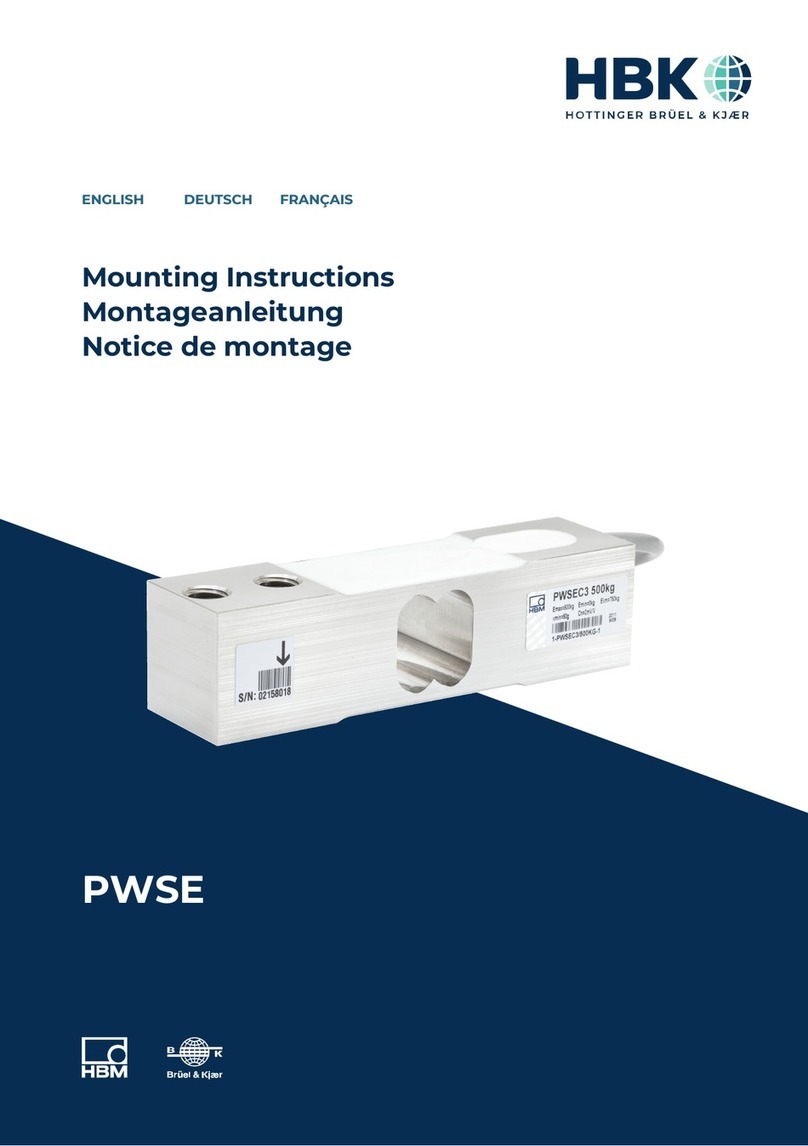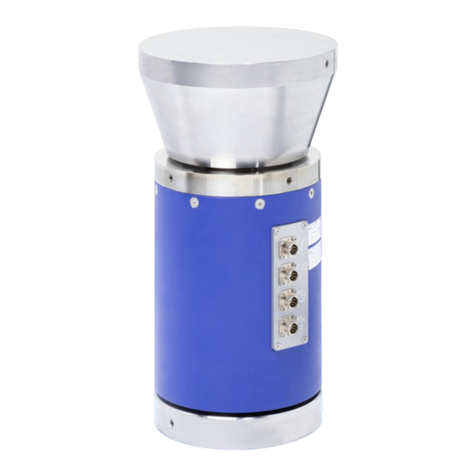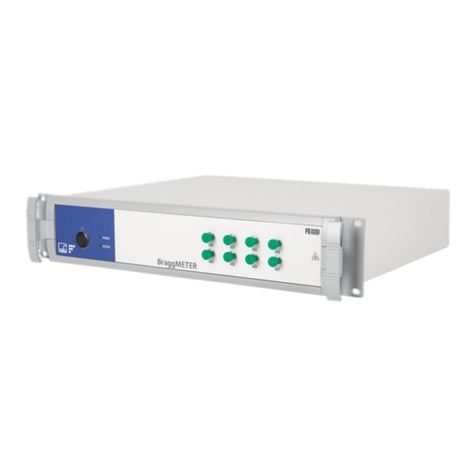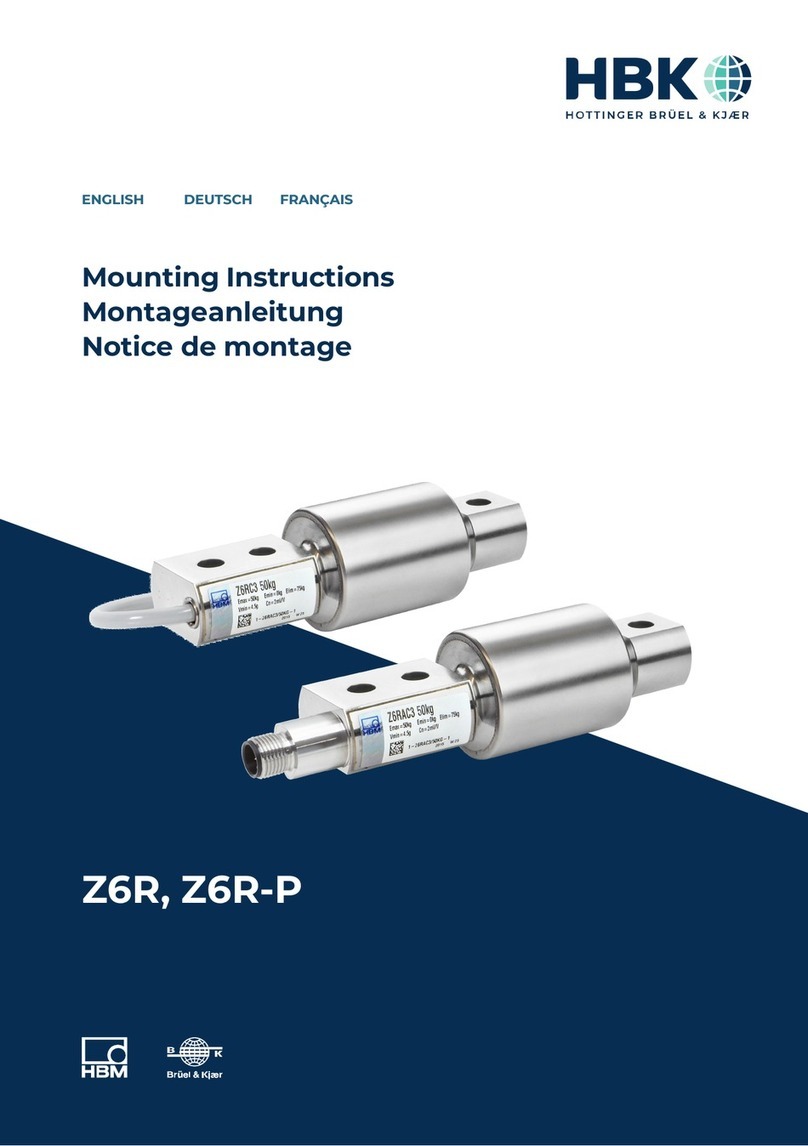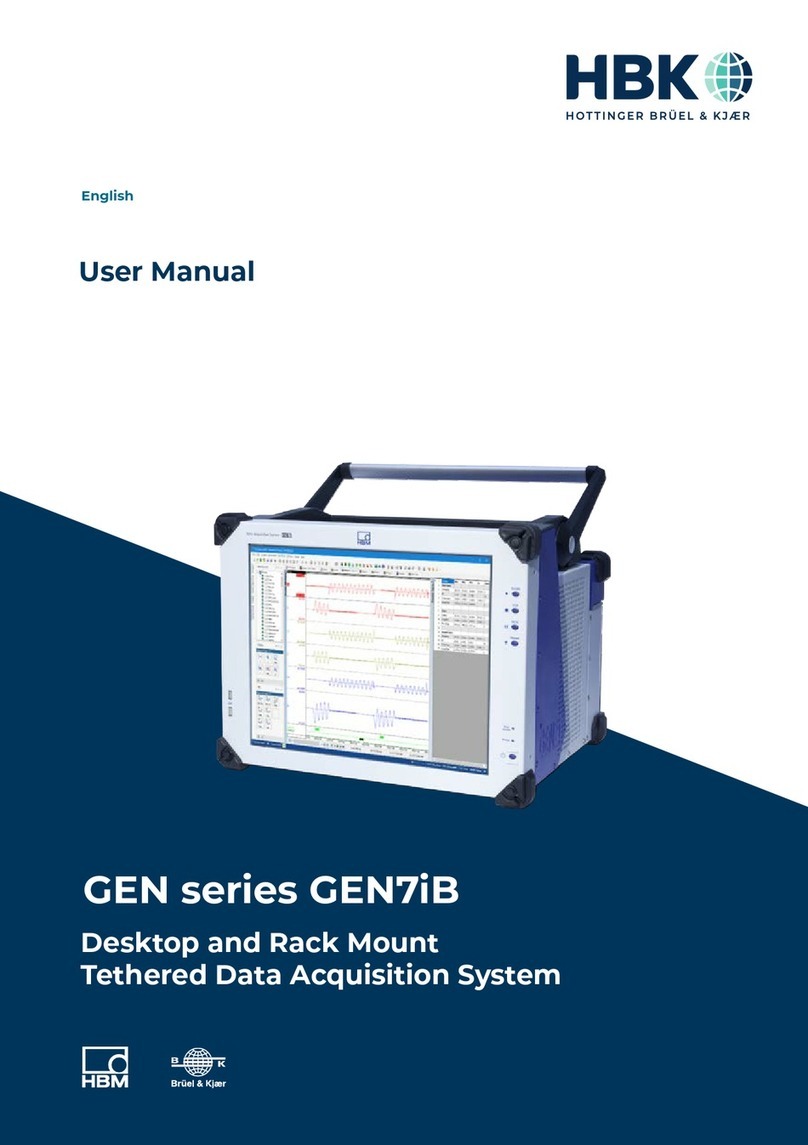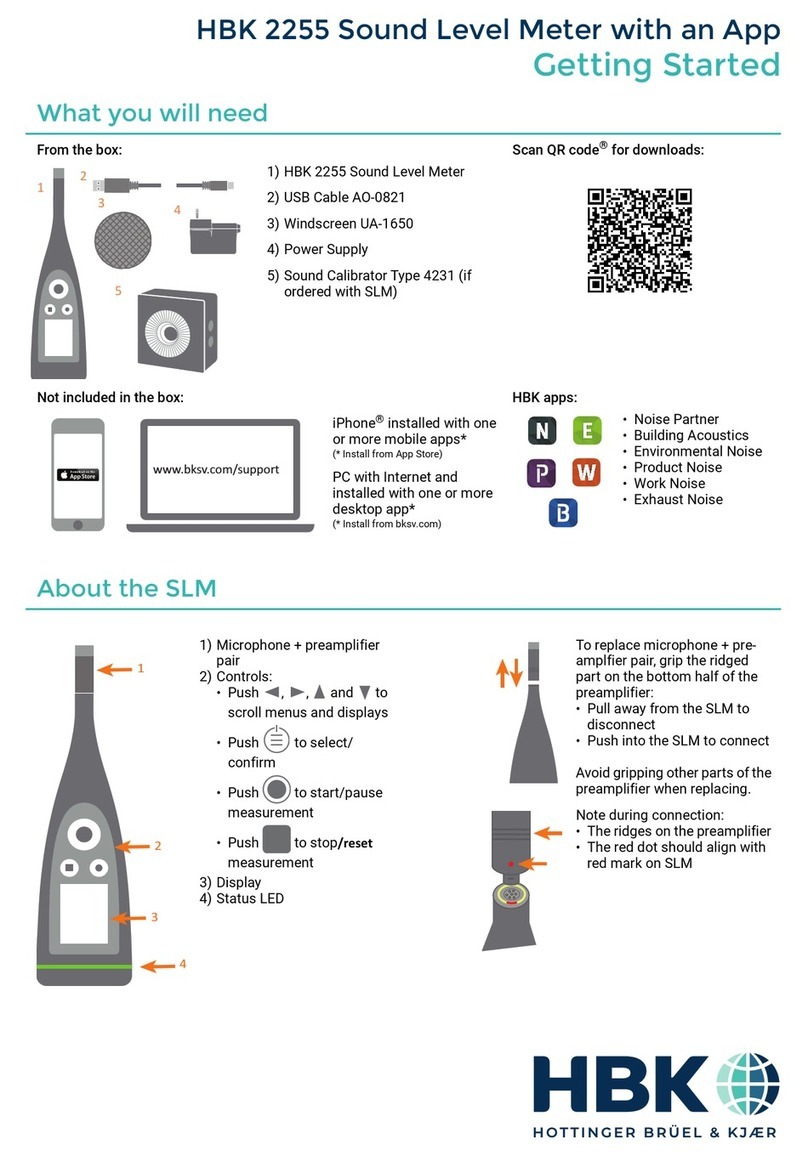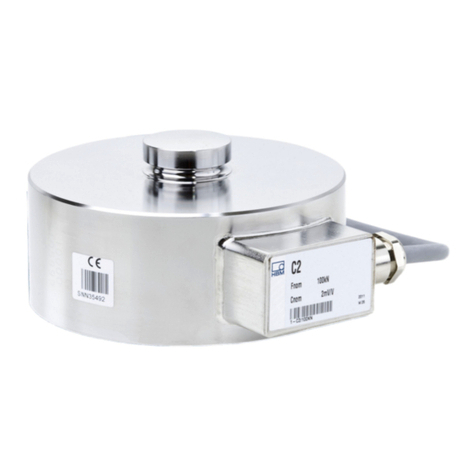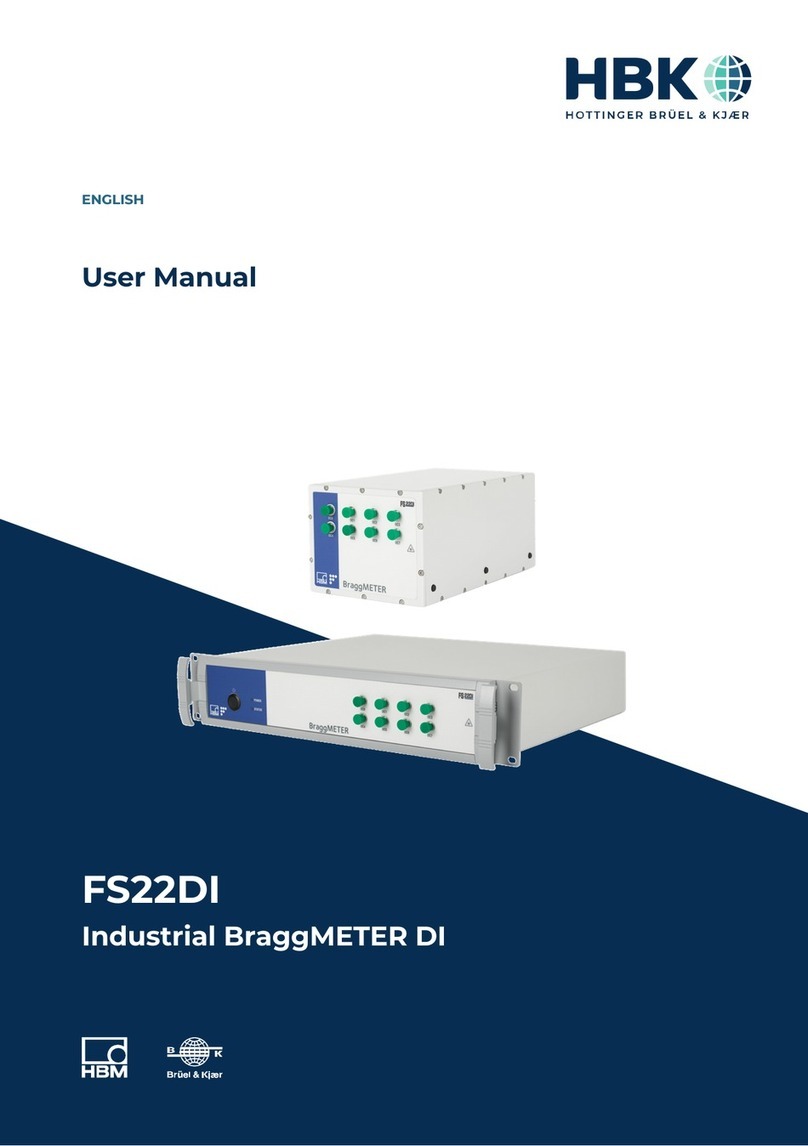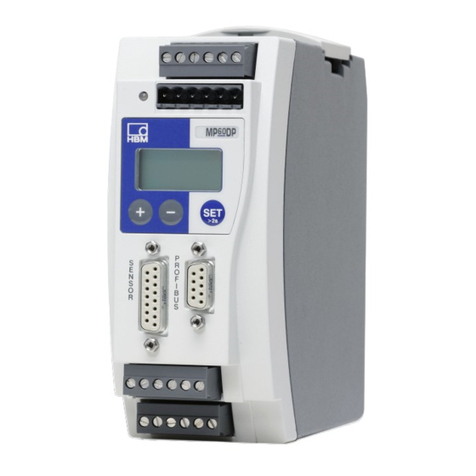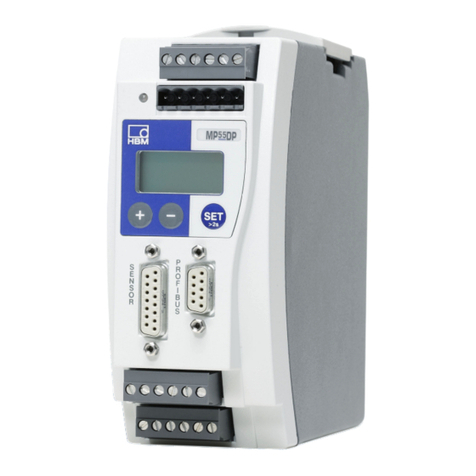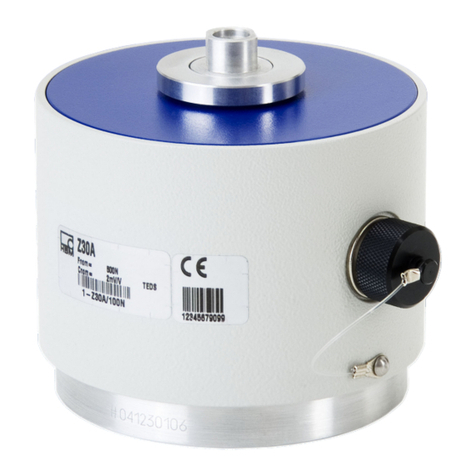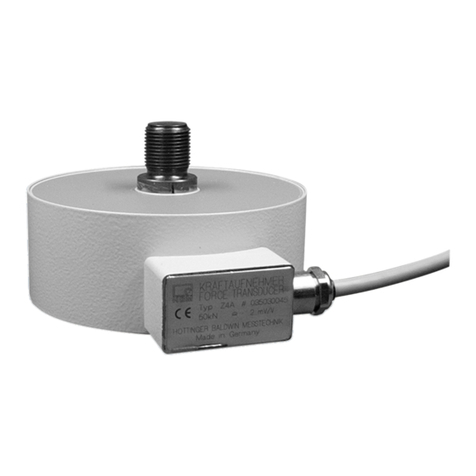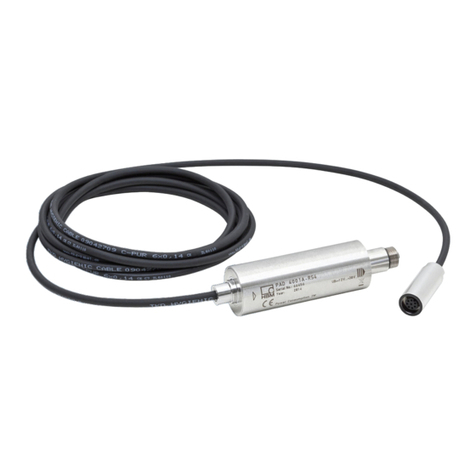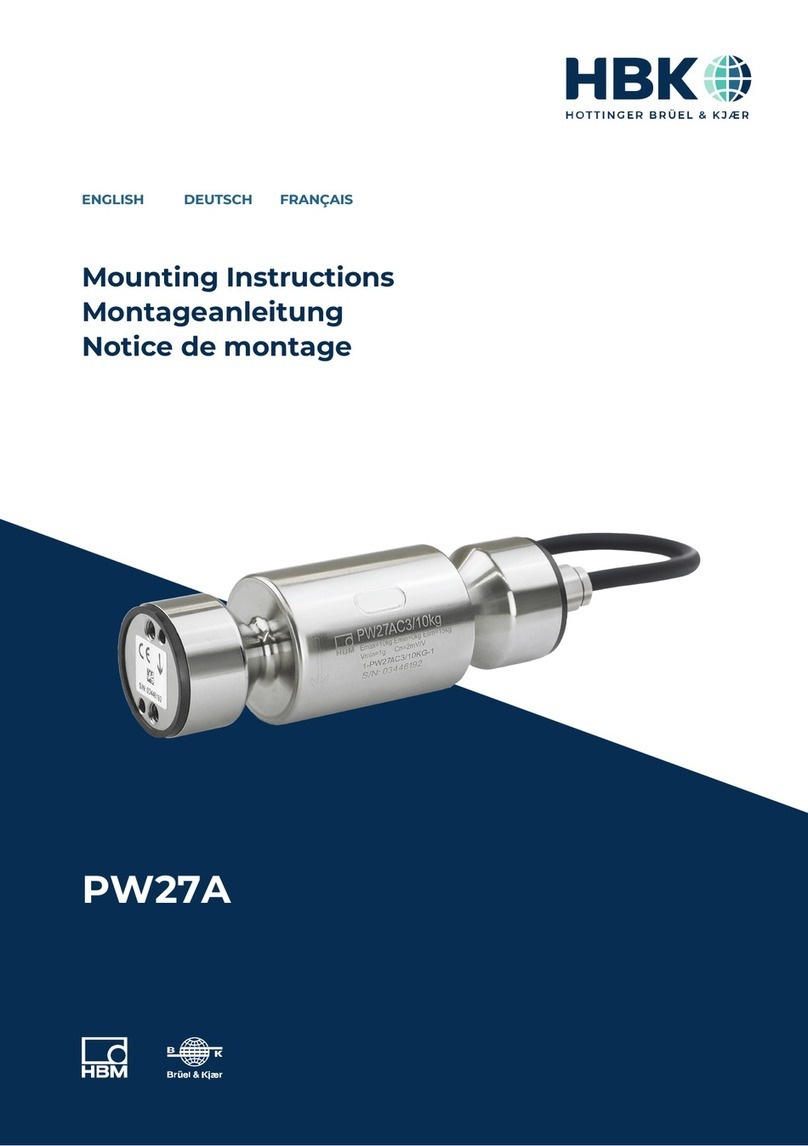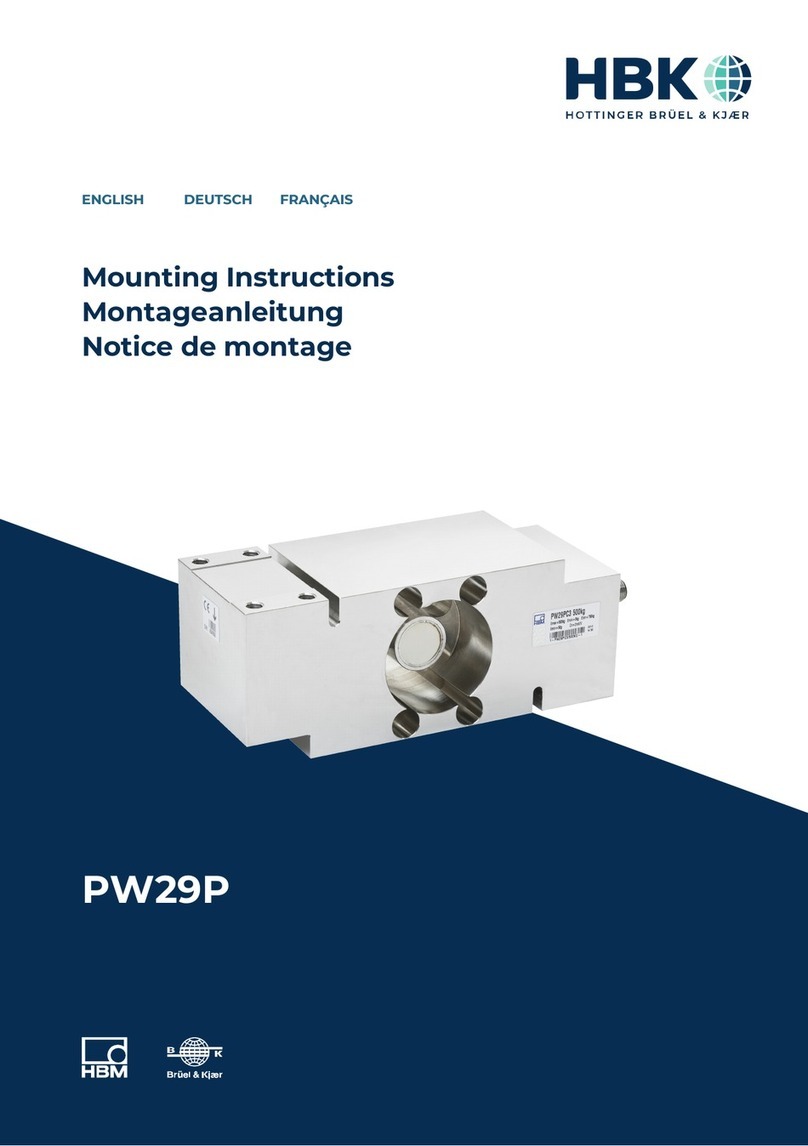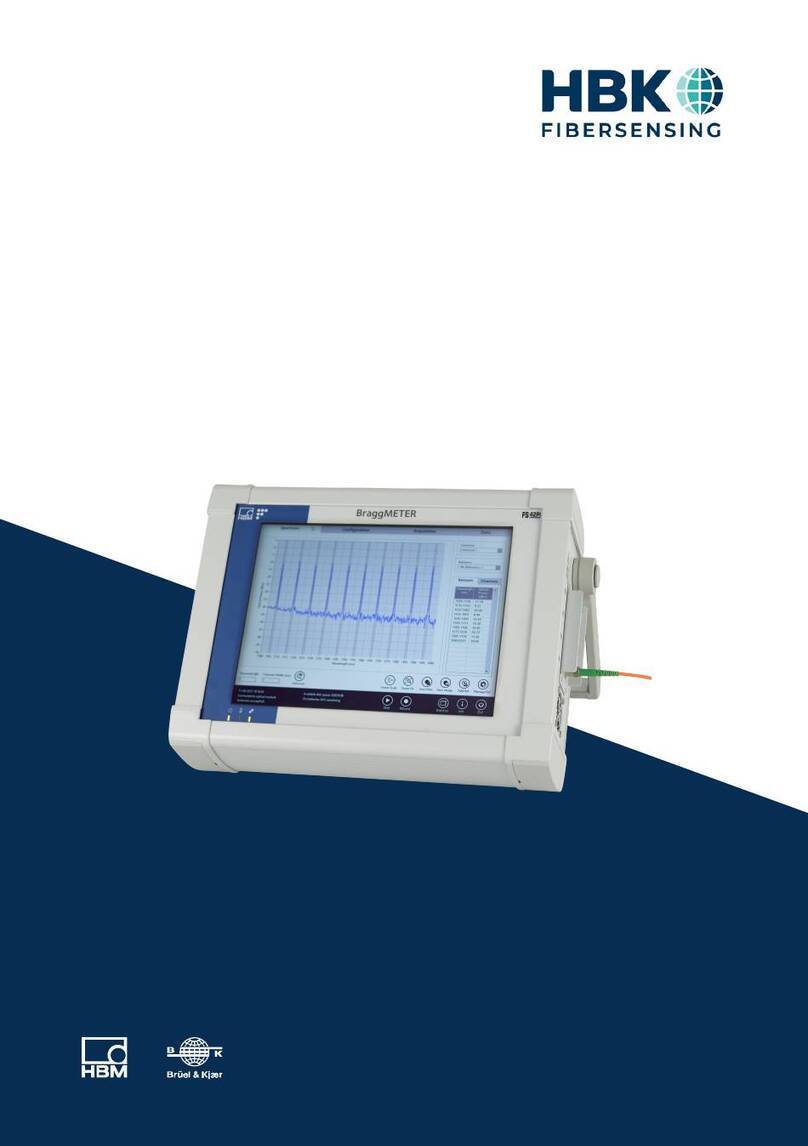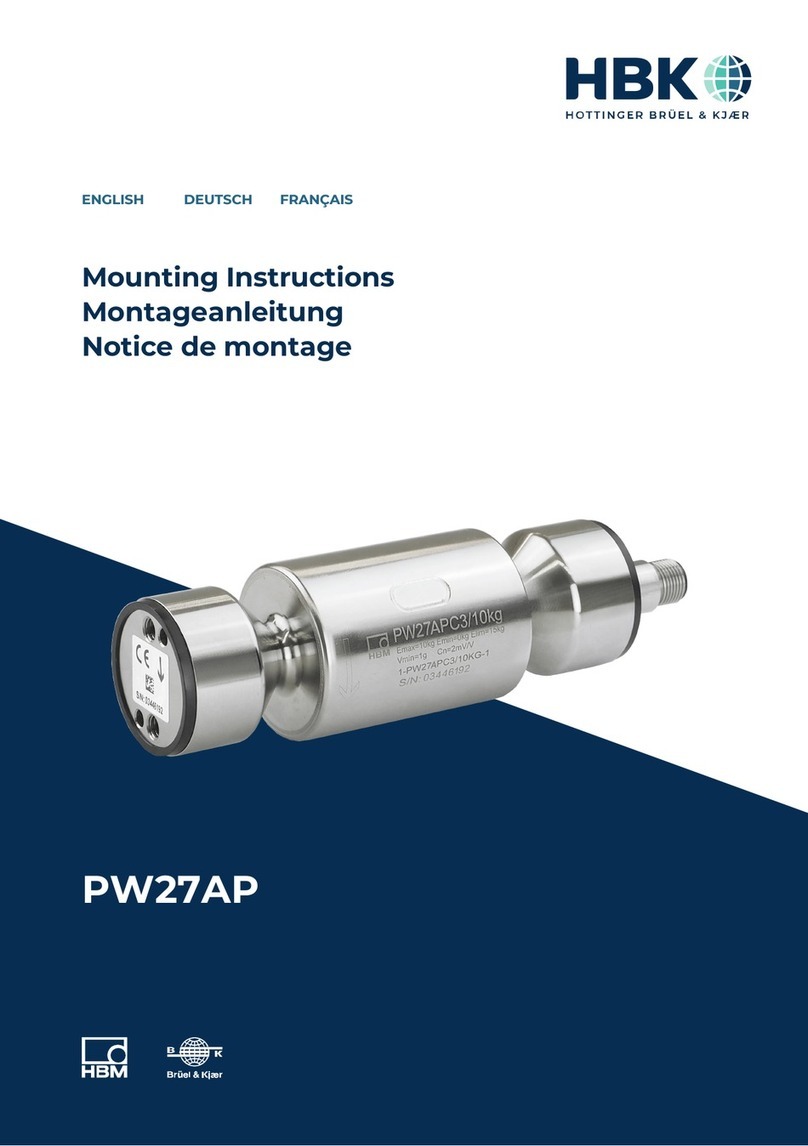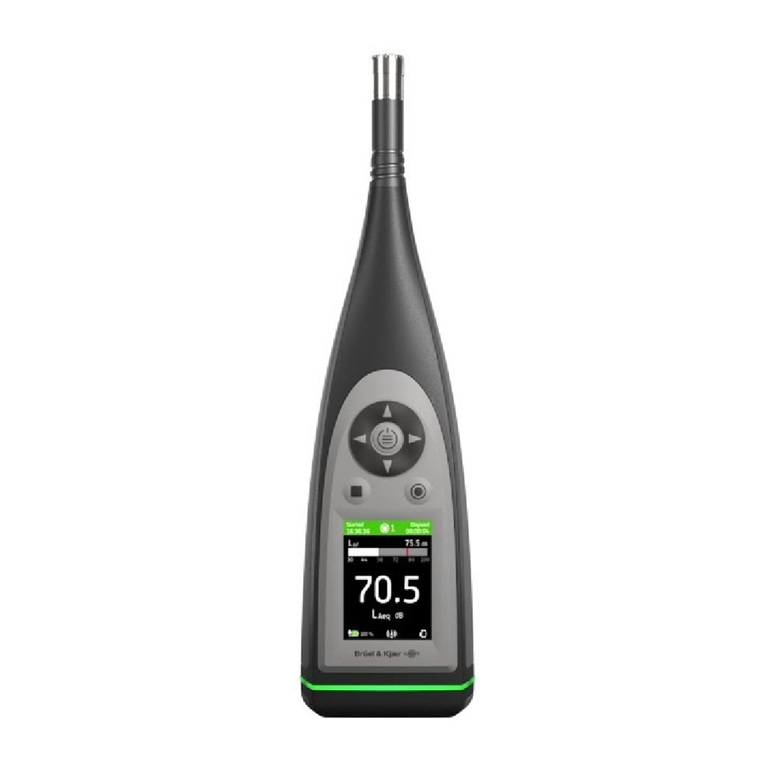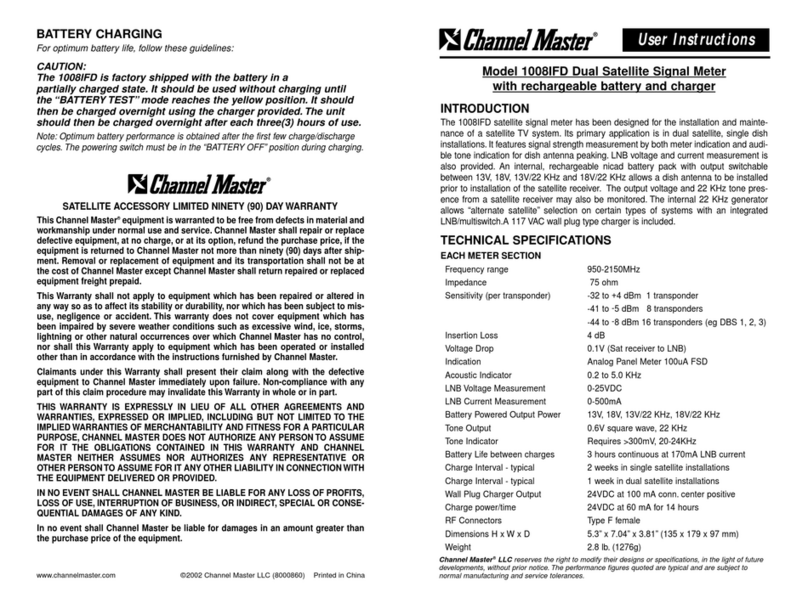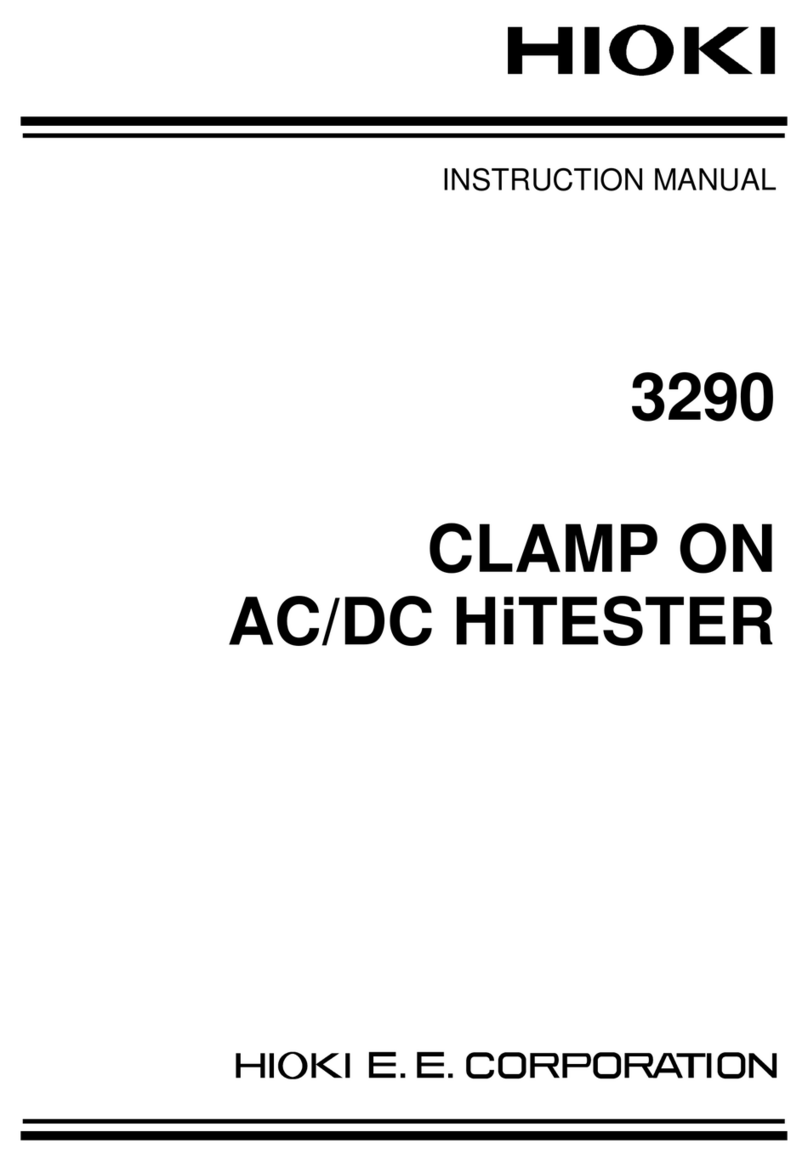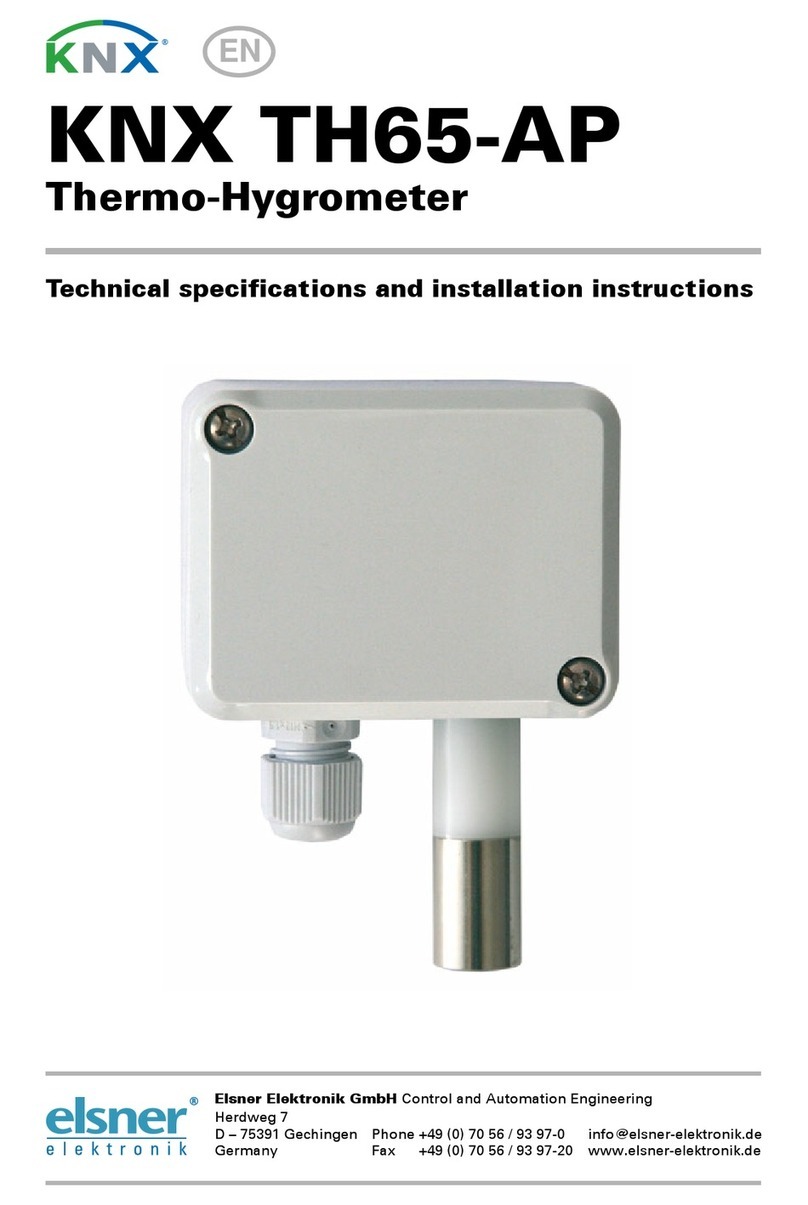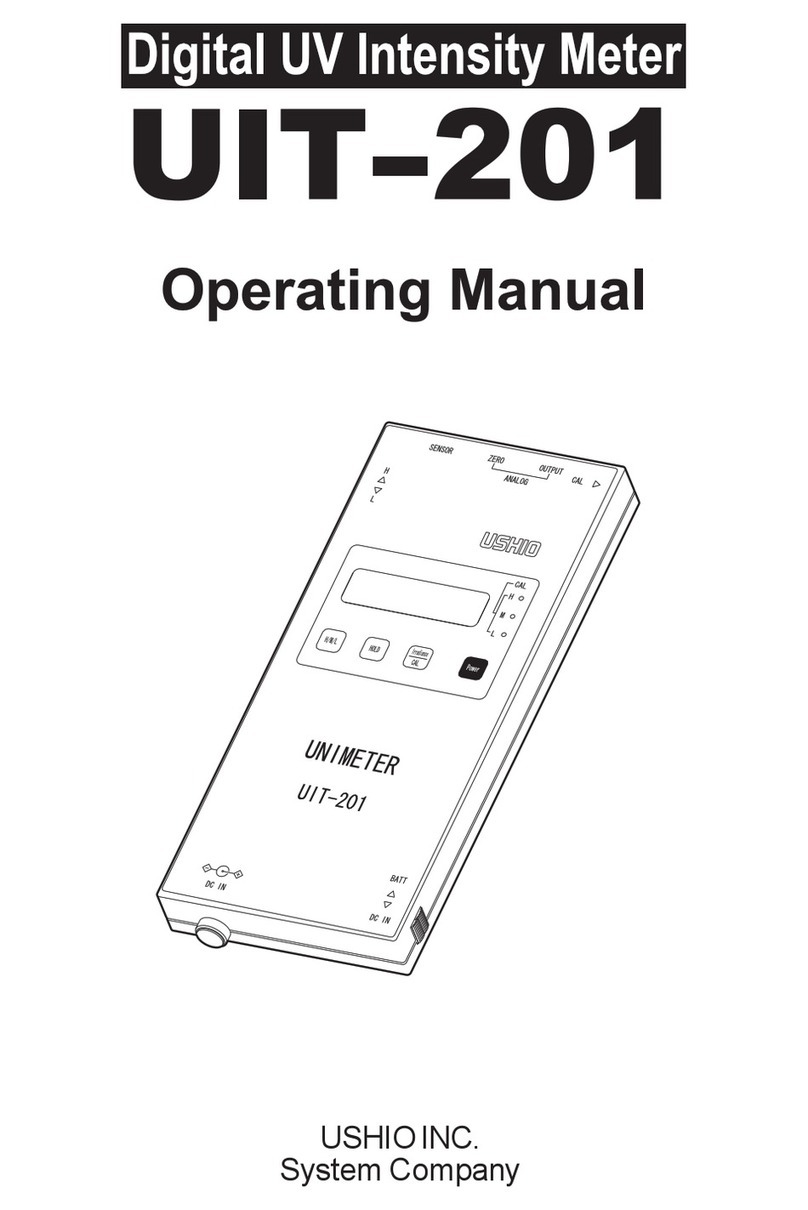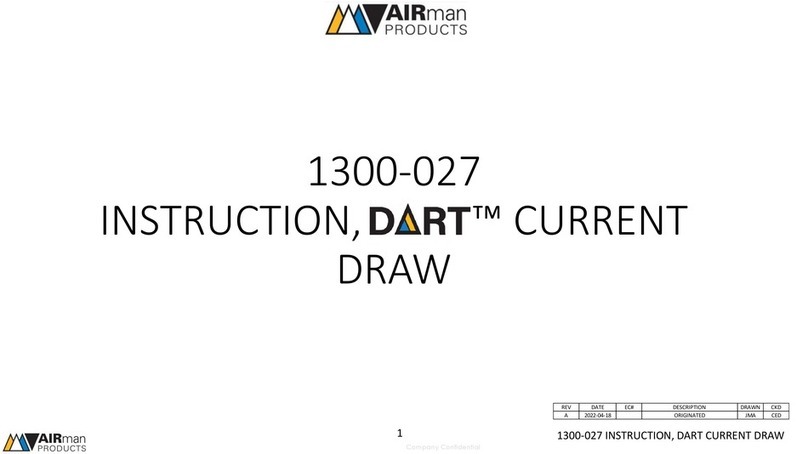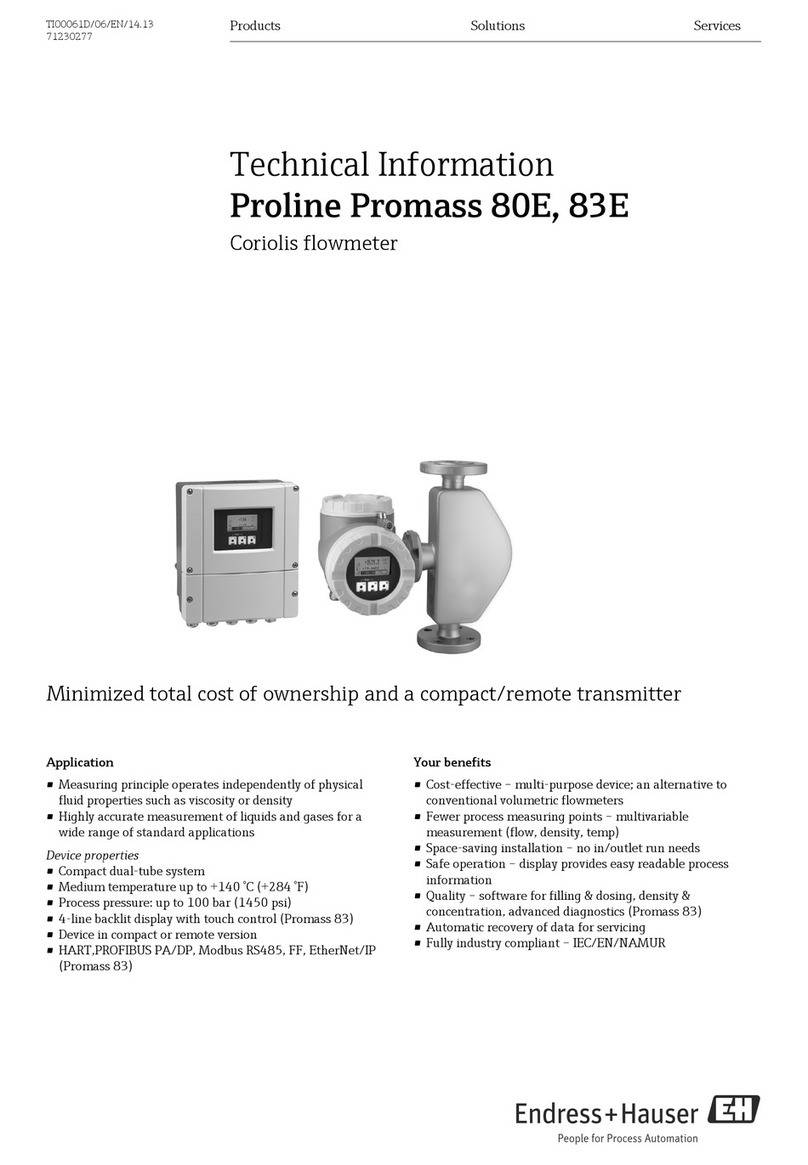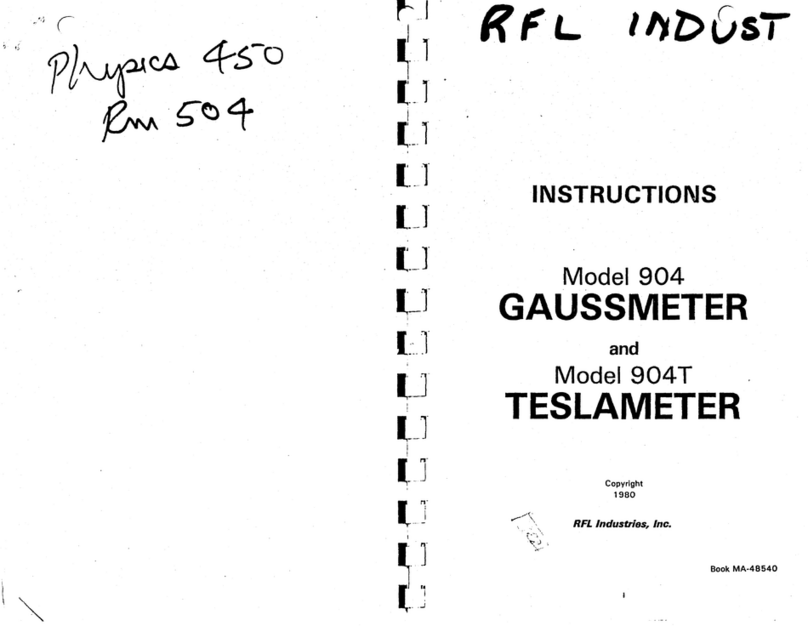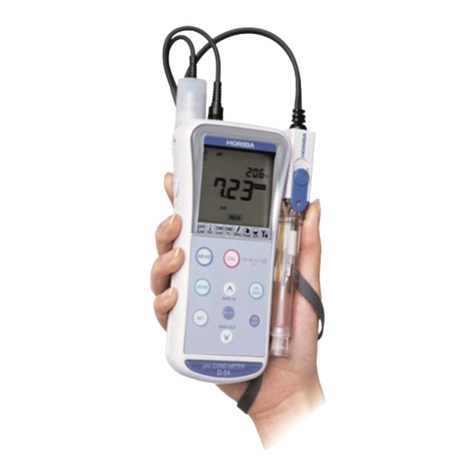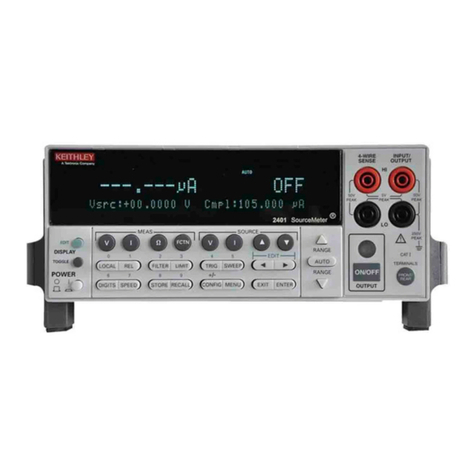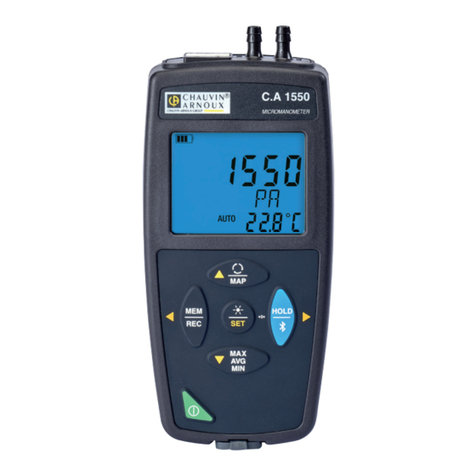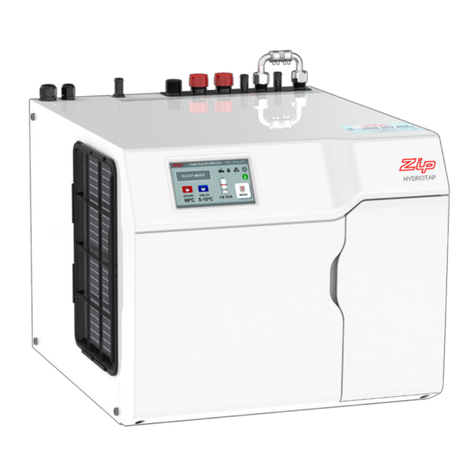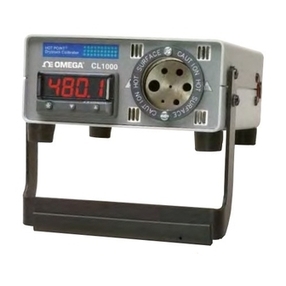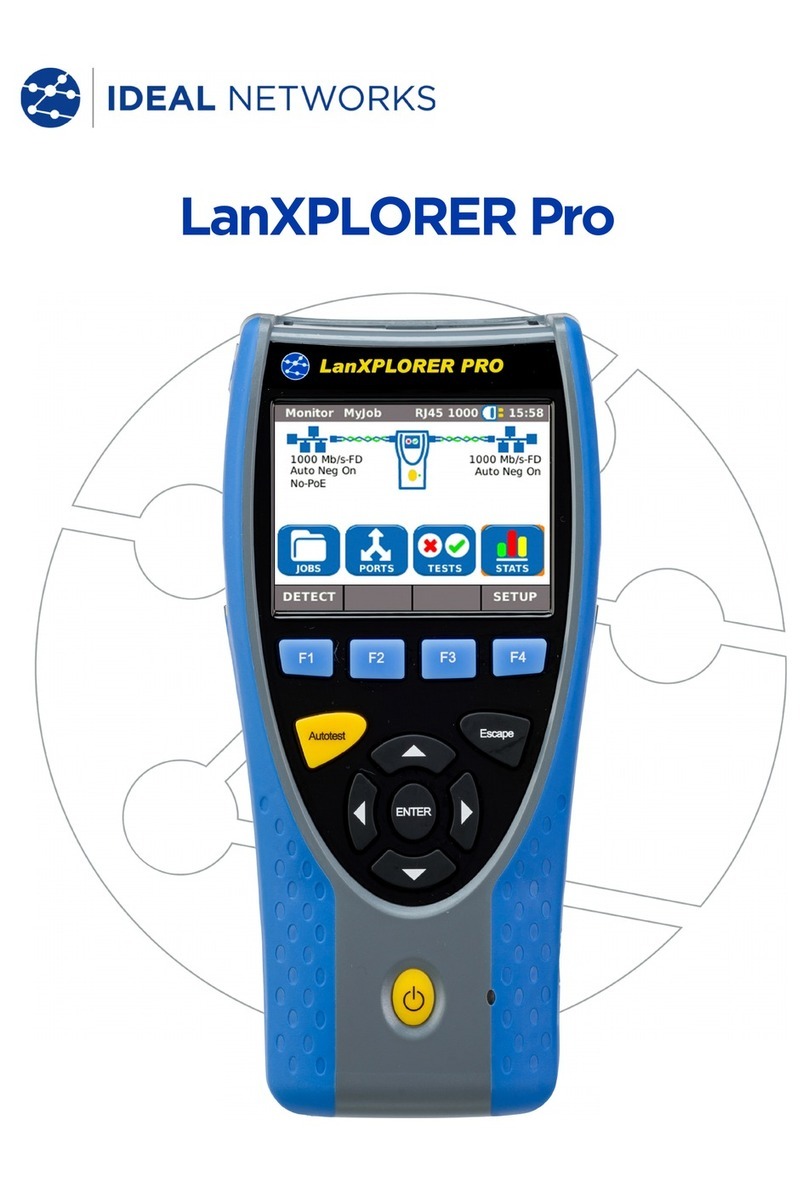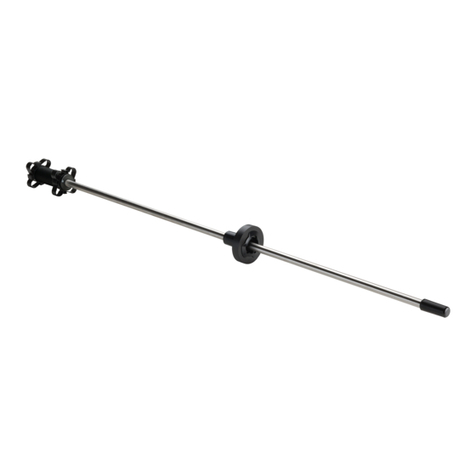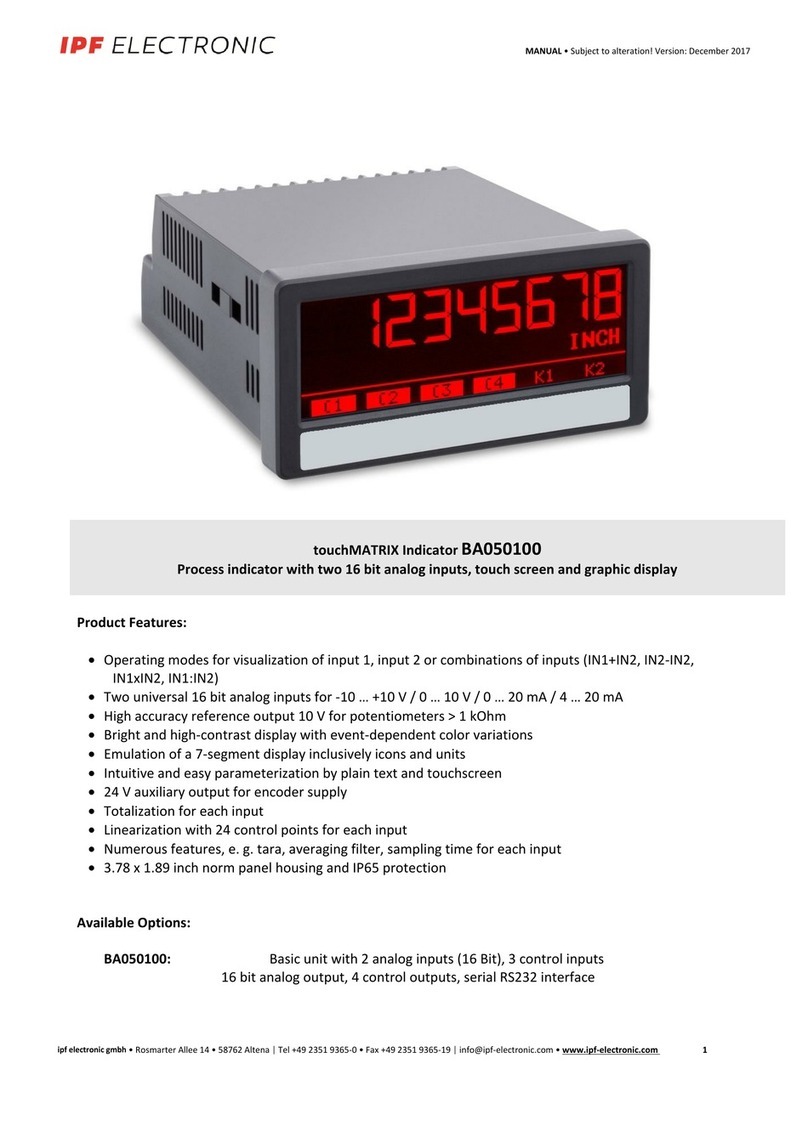HBK PW Series User manual

PW…, SP…
PW2C, PW2D, PW4M, PW4M-OP, PW6C, PW6D, PW10A,
PW12C, PW15AH, PW15B, PW15PH, PW16A, PW22, PW25,
PW25P, PW28, PW29, PW29P, PWSE, SP4M, SP8
ENGLISH DEUTSCH FRANÇAIS
Mounting Instructions
Montageanleitung
Notice de montage

Hottinger Brüel & Kjaer GmbH
Im Tiefen See 45
D-64293 Darmstadt
Tel. +49 6151 803-0
Fax +49 6151 803-9100
www.hbkworld.com
Mat.: 7-0101.0058
DVS: A02323_03_Y00_00
10.2021
EHottinger Brüel & Kjaer GmbH
Subject to modifications.
All product descriptions are for general information
only. They are not to be understood as a guarantee of
quality or durability.
Änderungen vorbehalten.
Alle Angaben beschreiben unsere Produkte in allge
meiner Form. Sie stellen keine Beschaffenheits- oder
Haltbarkeitsgarantie dar.
Sous réserve de modifications.
Les caractéristiques indiquées ne décrivent nos
produits que sous une forme générale. Elles
n'impliquent aucune garantie de qualité ou de
durabilité.

PW…, SP…
PW2C, PW2D, PW4M, PW4M-OP, PW6C, PW6D, PW10A,
PW12C, PW15AH, PW15B, PW15PH, PW16A, PW22, PW25,
PW25P, PW28, PW29, PW29P, PWSE, SP4M, SP8
ENGLISH DEUTSCH FRANÇAIS
Mounting Instructions

PW…, SP…
TABLE OF CONTENTS
2
TABLE OF CONTENTS
1 Overview of the products 3...........................................
2 Safety Instructions 5................................................
3 Markings used 7....................................................
3.1 Markings used in this document 7.....................................
3.2 Symbols on the device 7.............................................
4 Mechanical installation 8............................................
4.1 Important precautions during installation 8..............................
4.2 Mounting 8........................................................
4.3 Load cells with IP68/IP69K degree of protection 12.......................
4.4 Corrosion protection of stainless steel load cells 12.......................
4.5 Integrated overload protection 12......................................
5 Electrical connection 13..............................................
5.1 Connection in four-wire and six-wire configurations 13.....................
5.2 Cable extensions 14..................................................
5.3 Shortening the cable 14...............................................
5.4 Parallel connection (option) 15.........................................
5.5 Connection with connector plug 15.....................................
5.6 EMC protection 15...................................................
6 Specifications 16....................................................

3
PW…, SP…
OVERVIEW OF THE PRODUCTS
1 OVERVIEW OF THE PRODUCTS
Product
family
Electrical connection Material of
the measur
ing body
Equipment
protection
level
Integrated
overload
protection
PW2C 4-wire or 6-wire cable with
connector
Aluminum IP67 No
PW2D 4-wire or 6-wire cable with
connector
Aluminum IP67 No
PW4M 4-wire cable with connector Aluminum IP65 No
PW4M-OP 4-wire cable with free ends Aluminum IP65 Yes
PW6C 4-wire or 6-wire cable with
connector
Aluminum IP67 No
PW6D 4-wire or 6-wire cable with
connector
Aluminum IP67 No
PW10A 6-wire cable with connector Aluminum IP67 No
PW12C 6-wire cable with connector Aluminum IP67 No
PW15AH 6-wire cable with connector Stainless
steel
IP68/IP69K No
PW15B 6-wire cable with connector Stainless
steel
IP67 No
PW15PH Connector plug (M12) Stainless
steel
IP68/IP69K No
PW16A 6-wire cable with connector Aluminum IP67 No
PW22 6-wire cable with connector Aluminum IP67 Yes
PW25 6-wire cable with connector Stainless
steel
IP68/IP69K Yes
PW25P Connector plug (M12) Stainless
steel
IP68/IP69K Yes
PW28 Connector plug (M12) Measuring
body: Alu
minum,
housing:
stainless
steel
IP67 Yes
PW29 6-wire cable with connector Stainless
steel
IP68/IP69K No

PW…, SP…
OVERVIEW OF THE PRODUCTS
4
Integrated
overload
protection
Equipment
protection
level
Material of
the measur
ing body
Electrical connectionProduct
family
PW29P Connector plug (M12) Stainless
steel
IP68/IP69K No
PWSE 6-wire cable with connector Stainless
steel
IP67 No
SP4M 6-wire cable with connector Aluminum IP67 No
SP8 6-wire cable with free ends Aluminum IP67 No

5
PW…, SP…
SAFETY INSTRUCTIONS
2 SAFETY INSTRUCTIONS
In cases where a breakage could injure persons or damage equipment, the user must
take appropriate safety measures (such as safety devices to protect against falls,
collapses or overloads). For safe and trouble-free operation, load cells must not only be
correctly transported, stored, sited and mounted but must also be carefully operated and
maintained.
It is essential to comply with the relevant accident prevention regulations. In particular
you should take into account the limit loads quoted in the specifications.
Intended use
Load cells are designed for weighing technology applications. Use for any purpose other
than the above is deemed improper use.
In the interests of safety, load cells should only be operated as described in the Mounting
Instructions. It is also essential to comply with the legal and safety requirements for the
relevant application during use. The same applies to the use of accessories.
Load cells can be used as machine elements (for tank weighing, for example). In these
situations, you must make sure that for greater sensitivity, the load cells are not
constructed with the customary safety factors found in machine design. Load cells are
not safety elements within the meaning of the designated use. The layout of the
electronics conditioning the measurement signal should be such that measurement
signal failure does not cause damage.
General dangers of failing to follow the safety instructions
Load cells are state-of-the-art and reliable. Load cells can give rise to residual dangers if
they are used and operated incorrectly by untrained personnel.
Everyone involved with siting, starting up, maintaining or repairing a load cell must have
read and understood the Mounting Instructions and in particular the technical safety
instructions.
Residual dangers
The scope of supply and performance of the load cells covers only a small area of the
weighing technology. In addition, equipment planners, installers and operators should
plan, implement and respond to the safety engineering considerations of the weighing
technology in such a way as to minimize residual dangers. On-site regulations must be
complied with at all times. Reference must be made to the residual dangers associated
with the weighing technology.
In this manual, residual dangers are highlighted with symbols (see below).

PW…, SP…
SAFETY INSTRUCTIONS
6
Ambient conditions
With stainless steel single point load cells, please note that acids and all materials which
release ions will also attack all grades of stainless steel and their welded seams.
Should there be any corrosion, this could cause the load cell to fail. If this is the case, the
operator must provide appropriate means of protection.
Unauthorized conversions and modifications are prohibited
Load cells must not be modified from the design or safety engineering point of view
except with our express agreement. Any modification shall exclude all liability on our part
for any resulting damage.
Qualified personnel
Load cells must only be installed by qualified personnel, strictly in accordance with the
specifications in conjunction with the safety requirements and regulations listed below.
It is also essential to observe the relevant legal and safety regulations for the application
concerned. The same applies to the use of accessories.
Qualified personnel means persons entrusted with installing, mounting, starting up and
operating the product, who possess the appropriate qualifications for their function.
Accident prevention
The prevailing accident prevention regulations must be taken into account, even though
the breaking load is well in excess of the full scale value. Pay particular attention to the
following detailed in the specifications
SLimit load (EL)
SLimit load at max. eccentricity
SLimit lateral loading (ELq)
SBreaking load.
CAUTION
Load cells are precision measuring elements and must be handled carefully during
assembly and transport. Knocking or dropping the load cells can damage them. Suitable
retainers must be used during installation and operation to protect the load cells against
overloading. No forces or moments must be directed via the spring element during
mounting.

7
PW…, SP…
MARKINGS USED
3 MARKINGS USED
3.1 Markings used in this document
Important instructions for your safety are highlighted. Following these instructions is
essential in order to prevent accidents and damage to property.
Icon Meaning
CAUTION This marking warns of a potentially dangerous situation
in which failure to comply with safety requirements
could result in slight or moderate physical injury.
Note This marking draws your attention to a situation in
which failure to comply with safety requirements could
lead to property damage.
Important This marking draws your attention to important
information about the product or about handling the
product.
Tip This marking indicates tips for use or other information
that is useful to you.
Information This marking draws your attention to information about
the product or about handling the product.
Emphasis
See …
Italics are used to emphasize and highlight text and
identify references to sections of the manual, diagrams,
or external documents and files.
3.2 Symbols on the device
CE mark
With the CE mark, the manufacturer guarantees that the product
complies with the requirements of the relevant EC directives (the
Declaration of Conformity can be found on the HBM website
HBM (www.hbm.com) under HBMdoc).
Statutory waste disposal marking
In accordance with national and local environmental protection
and material recovery and recycling regulations, old devices that
can no longer be used must be disposed of separately and not
with normal household waste.
If you require further information about waste disposal, please
contact your local authorities or the dealer from whom you pur
chased the product.

PW…, SP…
MECHANICAL INSTALLATION
8
4 MECHANICAL INSTALLATION
4.1 Important precautions during installation
SHandle the transducer with care.
SWelding currents must not be allowed to flow over the transducer. If there is a risk
that this might happen, you must use a suitable low-ohm connection to electrically
bypass the transducer. HBM provides the highly flexible EEK ground cable for this
purpose, for example, that is screwed on above and below the transducer.
SEnsure that the transducer cannot be overloaded
Notice
Load cells are precision measuring elements and must be handled carefully. Dropping or
knocking the transducer may cause permanent damage. Make sure that the transducer
cannot be overloaded, including while it is being mounted.
CAUTION
There is a danger of the transducer breaking if it is overloaded. This can cause danger for
the operating personnel of the system in which the transducer is installed.
Implement appropriate safety measures to avoid overloads or to protect against the
resulting dangers.
4.2 Mounting
Clamp the load cells firmly at the mounting holes and apply the load at the other end. The
recommended screws and tightening torques are specified in the relevant product data
sheet, available at www.hbm.com/pw
Load must not be applied to the side where the cable connection is located, as this would
cause a force shunt.

9
PW…, SP…
MECHANICAL INSTALLATION
Platform center
Load application
Connection
cable
Mounting
Spacer (customer responsible for construction)
On explosion-
proof versions
ensure you take
the cover and
removed plug into
consideration
Fig. 4.1 Schematic diagram of PW2C, PW2D, PW4M, PW4M-OP, PW6C, PW6D, PW10A,
PW12C, PW15AH, PW15PH, PW16A, PW22, PW25, PW25P, PW29, PW29P,
PWSE, SP4M

PW…, SP…
MECHANICAL INSTALLATION
10
= =
= =
= =
Mounting
Spacer
(customer
responsible for
construction)
Connection cable
Mounting holes
Cover on explosion-proof
versions
(see dimensions)
Spacer
(customer responsible for construction)
Direction of loading center of platform
Load application
Load application Direction of loading center of platform
Alternative load
application
Removed plug on
explosion-proof
versions.
Fig. 4.2 Schematic diagram of PW15B

11
PW…, SP…
MECHANICAL INSTALLATION
Connection for valve
coupling plug
(included among the
items supplied)
Female connector
Mounting plate (not included in scope of supply)
Evenness of mounting plate <0.02mm
PW28 mounting at load application: 2xM6;
bolt property class10.9; tightening torque
14Nm
MountingPW28:
4xM8 DIN912;
bolt property
class10.9;
tightening torque
25Nm
Direction of loading
center of platform
Platform (not included
in the scope of supply)
PW28
Fig. 4.3 Schematic diagram of PW28
= =
Connection cable
Load application Direction of loading center of platform
Mounting
Fig. 4.4 Schematic diagram of SP8

PW…, SP…
MECHANICAL INSTALLATION
12
4.3 Load cells with IP68/IP69K degree of protection
Series PW15AH, PW15PH, PW25, PW25P, PW29, PW29P load cells are hermetically
encapsulated and are therefore very insensitive to the ingress of moisture. The
transducers achieve protection class IP68 (test conditions: 100 hours under 1 m water
column) and IP69K (water at high pressure, steam cleaner), as per DIN EN 60529. The
load cells should still be permanently protected against the ingress of moisture.
4.4 Corrosion protection of stainless steel load cells
The stainless steel load cells must be protected against chemicals that could attack the
steel transducer body or the cable.
Notice
Acids and all substances that release ions also attack stainless steel and weld seams.
The resulting corrosion can cause the transducer to fail. If this is the case, you must
provide appropriate means of protection.
4.5 Integrated overload protection
In loads cells that have an integrated overload protection, the sensor is reliably loaded at
static and quasi-static overloads of up to 1000% of the maximum capacity.
Notice
Dust, dirt and other foreign matter must not be allowed to accumulate sufficiently to divert
some of the measuring force onto the housing, thus distorting the measured value.

13
PW…, SP…
ELECTRICAL CONNECTION
5 ELECTRICAL CONNECTION
The following can be connected for measurement signal conditioning:
SCarrier-frequency amplifiers
SDC voltage amplifiers
that are designed for strain gage measurement systems.
The load cells are available in a four-wire and six-wire configuration or are equipped with
a connector plug. The pin assignment is specified in the following section or in the
relevant data sheet for the load cell available at www.hbm.com/pw.
5.1 Connection in four-wire and six-wire configurations
When load cells calibrated with a six-wire configuration are connected to amplifiers with
a four-wire configuration, the sense leads of the load cells must be connected to the
corresponding supply leads.
When load cells calibrated with a four-wire configuration are connected to amplifiers with
a six-wire connection, a relevant bridge must be attached to the amplifier input between
the sense lead and supply lead.
Connection with a 4‐wire cable
Plug-in contact 2 (white) = signal (+)
Plug-in contact1(blue) = excitation(+)
Plug-in contact 3 (red) = signal (-)
Plug-in contact4(black) = excitation(-)
Shield (yellow) = cable shield connected to
load cell body
Schematic diagram of a Pancon connector (CE100F26‐4), 4-pin
Blue marking
1342

PW…, SP…
ELECTRICAL CONNECTION
14
Connection with a 6‐wire cable
Plug-in contact4 (blue [BU]) = excitation voltage(+)
Plug-in contact1 (white [WH]) = measurement signal(+)
Plug-in contact2 (red [RD]) = measurement signal(-)
Plug-in contact3 (black [BK]) = excitation voltage(-)
Plug-in contact 6 (gray [GY]) = sense line (-)
Plug-in contact5 (green [GN]) = sense line(+)
Schematic diagram of a TE connector (TE3-640442-6), 6-pin
Shield (yellow [YN]) = Cable shield
5.2 Cable extensions
Use only shielded, low-capacitance measurement cables to extend cables, making sure
there is a proper connection with minimal contact resistance.
The cable of a six-wire load cell can be extended using a cable of the same type.
The cable of a four-wire load cell should be extended with a 6-wire cable. At the
connecting point between the 4-wire and 6-wire cables, the supply leads must be
connected to the relevant sense lead.
5.3 Shortening the cable
The cable of a load cell with a six-wire configuration can be shortened without this
changing the calibration.
The cable of a load cell with a four-wire configuration should not be shortened, as the
particular cable length is taken into consideration in the calibration.

15
PW…, SP…
ELECTRICAL CONNECTION
Notice
Shortening the cable changes the specifications of the load cells with a 4-wire cable.
5.4 Parallel connection (option)
Only single-point load cells with a compensated output (nominal (rated) sensitivity and
output resistance) are suitable for parallel connection. Many of the HBM single point load
cell types are available with this option.
5.5 Connection with connector plug
Plug-in contact1 = measurement signal(+)
Plug-in contact2 = not in use
Plug-in contact3 = sense lead(+)
Plug-in contact4 = not in use
Plug-in contact5 = sense lead(-)
Plug-in contact6 = excitation voltage(-)
Plug-in contact7 = excitation voltage(+)
Plug-in contact8 = measurement signal(-)
2
3
4
5
6
7
1
8
Fig. 5.1 Connector pin assignment
5.6 EMC protection
Electrical and magnetic fields often induce interference voltages in the measuring circuit.
Therefore:
SUse only shielded, low-capacitance measurement cables (HBM cables fulfill both
conditions).
SDo not route measurement cables parallel to power lines or control circuits. If this
cannot be avoided, protect the measurement cable with steel conduits, for example
SAvoid stray fields from transformers, motors and contact switches
To ensure the best EMC protection, the load cell, together with the connection cable and
the subsequent electronics, should be placed in a shielded housing.
Exception
The load cells with shielded, round cables are EMC-tested in accordance with EC
directives and identified by CE certification. However, you must ensure that the shield
of the connection cable is connected to the shielding housing of the electronics.

PW…, SP…
PW2C, PW2D, PW4M, PW4M-OP, PW6C, PW6D, PW10A,
PW12C, PW15AH, PW15B, PW15PH, PW16A, PW22, PW25,
PW25P, PW28, PW29, PW29P, PWSE, SP4M, SP8
ENGLISH DEUTSCH FRANÇAIS
Montageanleitung

PW…, SP…
INHALTSVERZEICHNIS
2
INHALTSVERZEICHNIS
1 Übersicht der Produkte 3............................................
2 Sicherheitshinweise 4...............................................
3 Verwendete Kennzeichnungen 6......................................
3.1 In dieser Anleitung verwendete Kennzeichnungen 6......................
3.2 Auf dem Gerät angebrachte Symbole 6.................................
4 Mechanischer Einbau 7..............................................
4.1 Wichtige Vorkehrungen beim Einbau 7.................................
4.2 Montage 7.........................................................
4.3 Wägezellen mit Schutzart IP68/ IP69K 11................................
4.4 Korrosionsschutz bei Wägezellen aus Edelstahl 11........................
4.5 Integrierter Überlastschutz 11..........................................
5 Elektrischer Anschluss 12............................................
5.1 Anschluss in Vier‐ und Sechsleiter‐Technik 12............................
5.2 Kabelverlängerungen 13..............................................
5.3 Kabelkürzung 13.....................................................
5.4 Parallelschaltung (Option) 14..........................................
5.5 Anschluss mit Anschlussstecker 14.....................................
5.6 EMV‐Schutz 14......................................................
6 Technische Daten 15.................................................
This manual suits for next models
22
Table of contents
Languages:
Other HBK Measuring Instrument manuals


